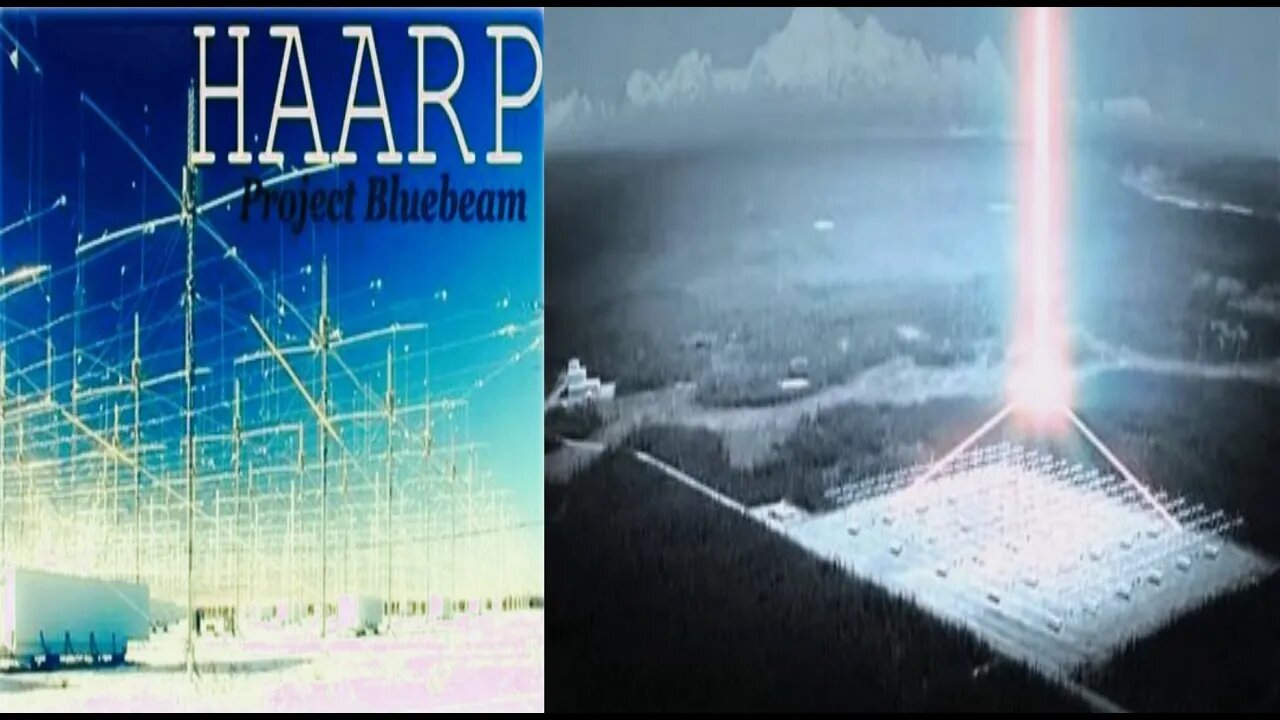Premium Only Content

HAARP The Worlds Most Powerful High Frequency Transmitter
The High-frequency Active Auroral Research Program, or HAARP, is a scientific endeavor aimed at studying the properties and behavior of the ionosphere. "The ionosphere stretches roughly 50 to 400 miles above Earth's surface, right at the edge of space. Along with the neutral upper atmosphere, the ionosphere forms the boundary between Earth's lower atmosphere — where we live and breathe — and the vacuum of space." (NASA)
Operation of the research facility was transferred from the United States Air Force to the University of Alaska Fairbanks on Aug. 11, 2015, allowing HAARP to continue with exploration of ionospheric phenomenology via a land-use cooperative research and development agreement.
HAARP is the world's most capable high-power, high-frequency transmitter for study of the ionosphere. The HAARP program is committed to developing a world-class ionospheric research facility consisting of:
The Ionospheric Research Instrument, a high power transmitter facility operating in the High Frequency range. The IRI can be used to temporarily excite a limited area of the ionosphere for scientific study.
A sophisticated suite of scientific or diagnostic instruments that can be used to observe the physical processes that occur in the excited region.
Observation of the processes resulting from the use of the IRI in a controlled manner will allow scientists to better understand processes that occur continuously under the natural stimulation of the sun.
Scientific instruments installed at the HAARP Observatory can also be used for a variety of continuing research efforts which do not involve the use of the IRI but are strictly passive. These include ionospheric characterization using satellite beacons, telescopic observation of the fine structure in the aurora and documentation of long-term variations in the ozone layer.
Collaborative Opportunities
The HAARP site is an ideal location for deploying synergistic instrumentation for studying radio and space physics. Investigators interested in deploying diagnostic apparatus including radio receivers and radar, lidar, optical imagers and spectrometers, and interferometers are encouraged to contact the HAARP Ionospheric and Radio Science Laboratory at [email protected]
-
 2:04:27
2:04:27
TimcastIRL
9 hours agoAntifa CONVICTED Of TERRORISM, Fears Of CIVIL WAR Grow | Timcast IRL
239K82 -
 2:16:43
2:16:43
TheSaltyCracker
6 hours agoIt's Over Zelensky ReeEEStream 11-21-25
81.3K130 -
 4:50:37
4:50:37
Drew Hernandez
23 hours agoMIKE HUCKABEE EXPOSED FOR OFF RECORD MEETING WITH CONVICTED ISRAELI SPY?
46.4K22 -
 4:07:43
4:07:43
SynthTrax & DJ Cheezus Livestreams
17 hours agoFriday Night Synthwave 80s 90s Electronica and more DJ MIX Livestream SYNTHWAVE / ANIME NIGHT
33.5K1 -
 14:25
14:25
Tactical Advisor
15 hours agoReal Life John Wick Suit | Grayman & Company
21.4K2 -
 LIVE
LIVE
I_Came_With_Fire_Podcast
14 hours agoAlien Enemies Act | Dismantling the Department of Education | Valhalla VFT & America First
296 watching -
 19:53
19:53
MetatronHistory
5 hours agoRome VS Greece - Ultimate Clash of Civilizations Explained
12.3K4 -
 33:09
33:09
Exploring With Nug
7 hours ago $5.71 earnedThey Weren’t Ready for Nightfall on Blood Mountain… So I Helped Them Down
31.6K1 -
 1:16:42
1:16:42
Sarah Westall
6 hours agoBoardroom and Government Infiltration: The Silent Erosion of American Power w/ Mike Harris
19.8K4 -

JahBlessCreates
4 hours ago🎉WE BACK!! MUSIC | VIBES | GAMES
4.35K1